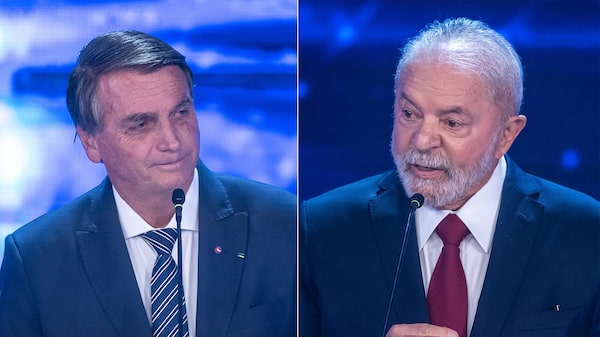Bloomberg Línea — Following Brail’s presidential elections on Sunday, one of the most talked-about topics in WhatsApp groups in the evening was the difference between what opinion polls had predicted regarding the result, and the actual results.
During the campaign, Bloomberg Línea published the results of four polls, by Datafolha, Ipec (ex-Ibope), Quaest/Genial Investimentos and FSB/BTG Pactual, based on their experience of conducting surveys.
None of them managed to capture the extent of support for current President Jair Bolsonaro, however, who garnered 43.24% of the valid votes on Sunday, with 99.83% of the votes counted. The only poll to come close was that of Quaest/Genial Investimentos, which indicated that the president could receive 40% of the votes, counting the margin of error.
One possible explanation is that Bolsonaro maintained or even accelerated the increase in support demonstrated in the polls in the final stretch of the campaign.
However, the polls correctly predicted voting intentions for former president Luiz Inácio Lula da Silva, who garnered 48.35%, with the closest poll by FSB/BTG Pactual, which predicted that Lula would receive 48%, and which was carried out a week before the election.
In Sunday’s voting, the difference between Lula and Bolsonaro was around 5 percentage points.
Even taking into account margin of error, the polls were mistaken: Datafolha and Ipec predicted a difference of up to 10 percentage points, while the Quaest/Genial and FSB/BTG polls forecast a difference of up to 7%.
Here is a roundup of each poll:
Datafolha
- Lula: 50% of the vote (between 48% and 52% with a margin of error)
- Bolsonaro: 36% (between 34% and 38% with a margin of error)
Datafolha spoke to 12,800 people aged 16 or older in 310 municipalities on September 30 and October 1, and set a margin of error of -2% and +2%.
Ipec
- Lula: 51% (between 49% and 51% with margin of error)
- Bolsonaro: 37% (between 35% and 39% with margin of error)
The latest Ipec (former Ibope) survey heard the opinion of 3,008 people between September 29 and October 1, with a margin of error of -2%/+2% and a confidence index of 95.45%.
Quaest/Genial Investimentos
- Lula: 49% (between 47% and 51% with margin of error)
- Bolsonaro: 38% (between 36% and 40% with margin of error)
Quaest consulted 3,600 people in their homes between September 30 and October 1, with margin of error of -2%/+2% and a confidence index of 95%.
FSB/BTG Pactual
- Lula: 48% (between 46% and 50% with margin of error)
- Bolsonaro: 37% (between 35% and 39% with margin of error)
The survey interviewed 2,000 people by telephone between September 23 and 25. The margin of error was two percentage points more or less, and the confidence index was 95%.
Outside the four pollsters mentioned, Atlas Intel, in partnership with political consultancy Arko Advice, came closest to the president’s result. In a survey published on September 30, Atlas/Arko indicated that Lula would garner 50.7% of the valid votes (between 49.7% and 51.7% with margin of error), while Bolsonaro would gain 41% (between 40% and 42% with margin of error), still below the resulting 43.26%.
The Atlas/Arko survey collected responses from 4,500 people over the Internet between September 24 and 28. Respondents were recruited organically during routine web surfing in geolocated territories on any device (smartphones, tablets, laptops or PCs).
The margin of error for the survey was one percentage point. The survey had a 95% confidence level.
How are the differences explained?
This is not the first time that a right-wing candidate has had voting intentions underestimated in the polls. Four years ago, Bolsonaro arrived on the eve of the first round with 40% of the valid votes, according to a survery of voter intentions by Datafolha, while the runner-up, Fernando Haddad of the Workers’ Party, had 25% of voter intentions, according to the poll. However, in the election, both candidates put in a superior performance, especially Bolsonaro, who garnered 46% against 29.3% for Haddad.
Before the first round of voting, some specialists and research institute staff pondered a number of issues that could lead to or prevent greater accuracy of the polls, one of which is the difficulty of defining sample groups of voters that adhere less to the Brazilian social pyramid determined by income and education, but rather are more similar to those who actually go to the polls on election day.
In theory, lower class strata tend to direct their votes to leftist candidates, but their presence in the polls tends to be smaller than their actual presence among the population.




